City Dog
With consistency, patience, and a little creativity, you can train a retriever in just about any environment
With consistency, patience, and a little creativity, you can train a retriever in just about any environment
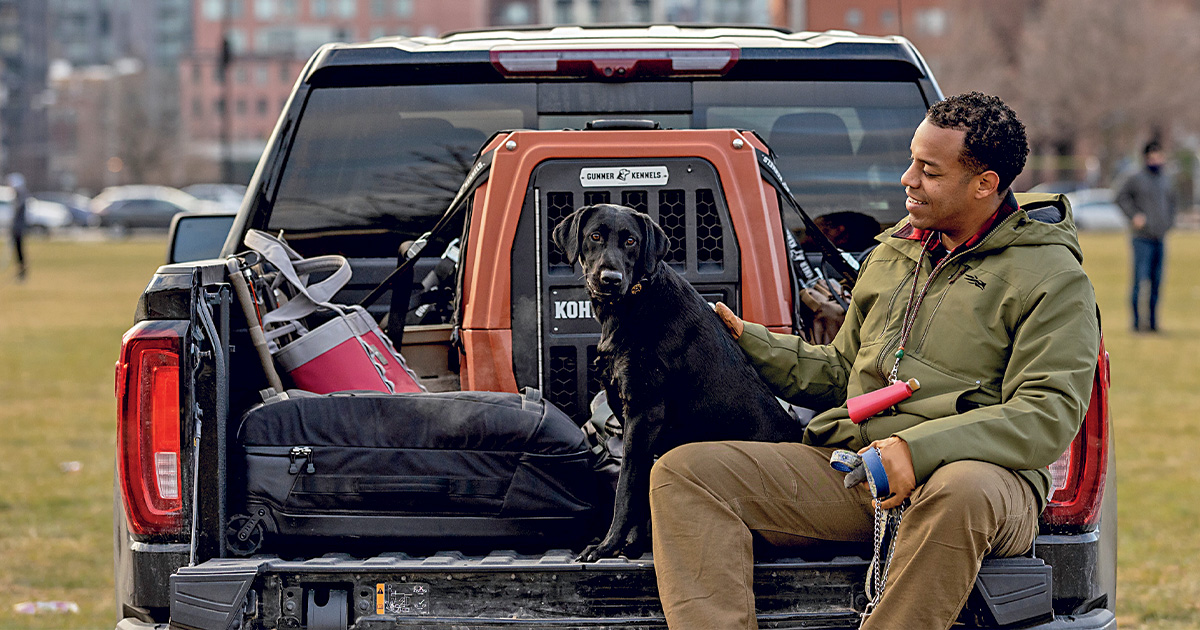
As a young lawyer living in downtown Chicago, Douglas Spale would wake up early every morning, ride the elevator down from his apartment on the 23rd floor, and head across the street to a vacant lot to train his Lab, Sunka O’ War. He admits to getting some funny looks, especially when he would bring along a sack of decoys and arrange them on the ground to get Sunka accustomed to running through decoys on his way to retrieve a bumper.
Spale didn’t own a car at the time, so to get Sunka some experience with water retrieves, he would hire an Uber to take him and his pup to a dog beach on the Lake Michigan shoreline. Navigating the lake’s big waves made his retriever an excellent swimmer, he says, and dealing with all the people and other dogs running around helped the young Lab learn to maintain focus in the face of some pretty significant distractions.
Despite the challenges of training in this kind of environment, Spale produced a competent, steady, driven, and well-behaved retriever. “It was great,” he recalls. “I loved every part of it—the obstacles, the challenges, everything.”
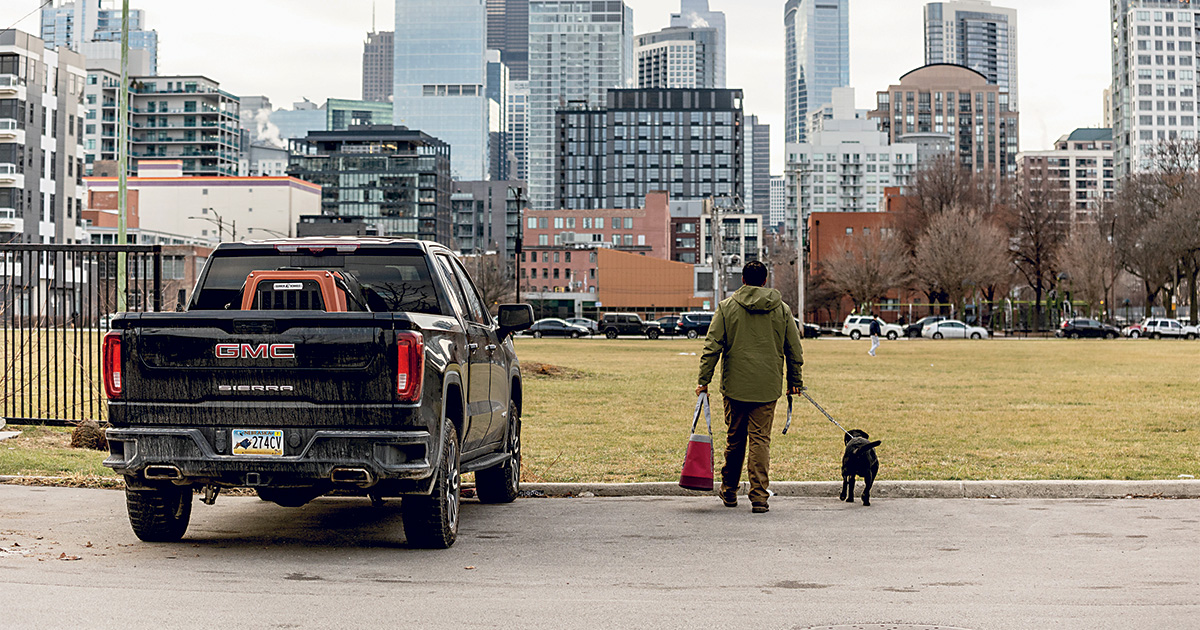
Living in a city or suburb shouldn’t be a barrier to training. Start by focusing on basic obedience, then find some open space, connect with other trainers, and take an occasional road trip.
Many waterfowlers who live in urban or suburban areas might be hesitant to take on the task of training their own retriever, perhaps opting to send their dog off to a pro trainer instead. But most professional and amateur handlers agree that, with the right approach, you can experience the satisfaction and accomplishment of training your own retriever no matter where you live. “It’s absolutely reasonable for someone to train their own retriever in the city or suburbs,” says Karl Gunzer, sporting dog director at Nestlé Purina. “For the average hunter and hunting dog, a lot can be taught in the house and the yard with occasional travel on weekends.”
That’s not to say you won’t have lots of questions, such as, How do I get started? Where can I train? How can I introduce gunfire and real birds? What about water retrieves? Where can I find help when I need it? We talked with several knowledgeable retriever trainers to help answer all of these questions and more.
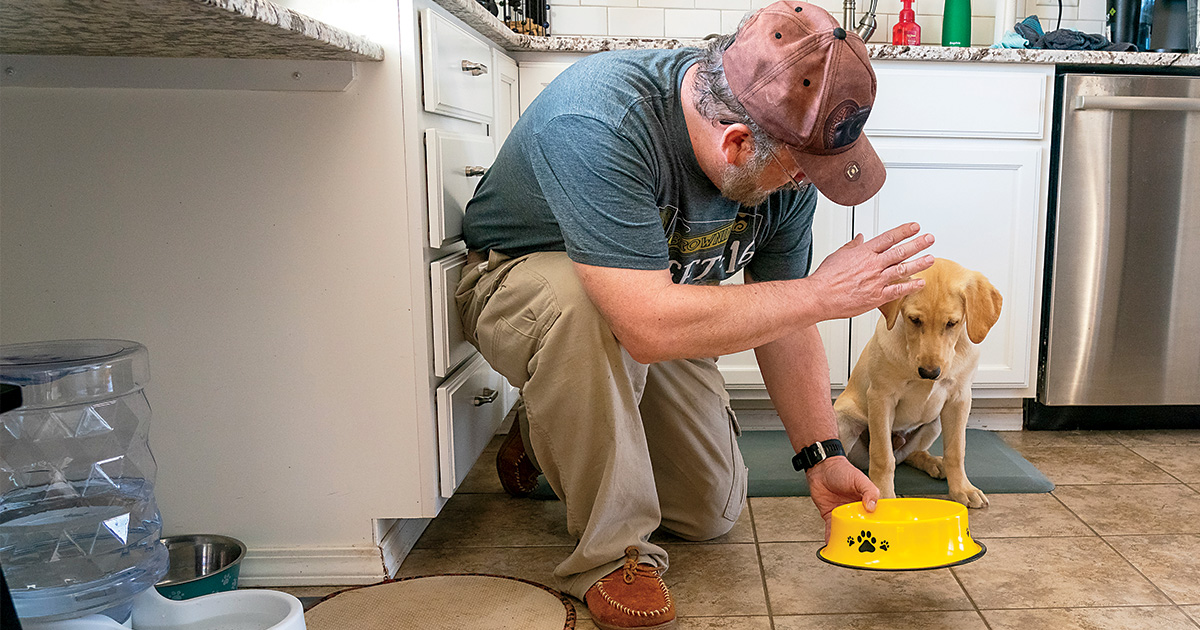
Most of the fundamentals can be taught in the house or backyard. Spending lots of time on the sit, come, heel, and place commands will set the stage for success in training more advanced skills later on.
It all starts at home. “You can do the basics in the backyard or in the house,” Spale says. “The fundamentals you can do just about anywhere.” This includes basic behaviors like sit, come, and heel and, if you have a decent-sized yard, more advanced lessons such as hand signals and force-training.
Remember that dogs are always watching you and always learning. Take advantage of this to teach lessons throughout the day, not only during formal training sessions. For example, make the pup sit and stay before eating, sit at the door before going in or out, and remain on his designated “place” (a platform, blanket, or dog bed) until you release him. These basic lessons, when applied consistently, are part of a solid foundation of obedience that every retriever needs. “Remember that rules are rules,” Gunzer stresses. “If you let your retriever run amok in the house, that’s a great training opportunity. All these little skills have an effect on the dog’s obedience in the field.”
This consistent learning-teaching partnership between dog and owner is also a good reason to keep your dog in the house with you, rather than outside in a kennel. “The best dogs are house dogs,” Gunzer says. “A dog that lives in the house tends to be better trained and more sociable than a typical kennel dog. I encourage people to have their dog in the house with them.”
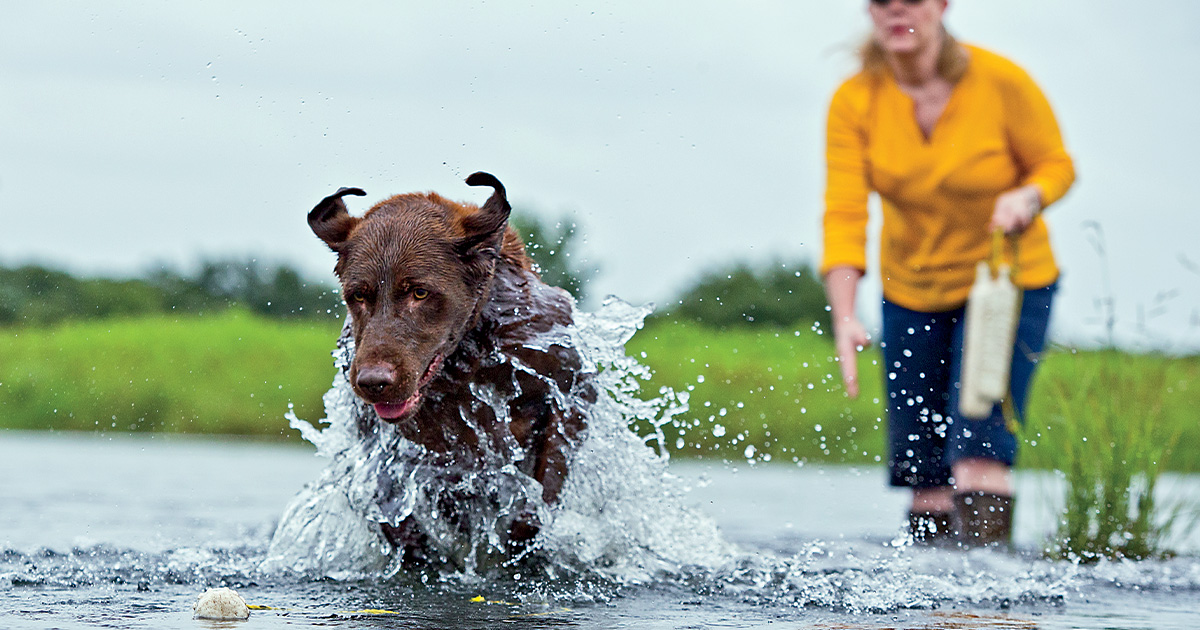
Water retrieves should be an essential part of your duck dog’s training plan. Consult maps or satellite images to find publicly accessible lakes or rivers in your area.
You can get a lot done at home, but at some point you’ll need to get out of the house and the yard. “You’re going to have to put on some miles,” says John DePalma, who, in addition to being a die-hard waterfowler, is the CEO of Brand Intelligent, a firm that provides marketing and public relations services to the outdoor industry.
Based in the Denver area now, DePalma used to live in Seattle, where he trained two yellow Labs in an urban environment while holding down a demanding job and busy travel schedule. He did much of the basic training at home but quickly started looking for other places to work his dogs. “You’ve got to train the dog in different environments,” he says. “Put him into as many different situations as possible. This is critical. Hunters don’t hunt the same place all the time. So this experience when you’re training really makes it easier when you’re hunting in different places.”
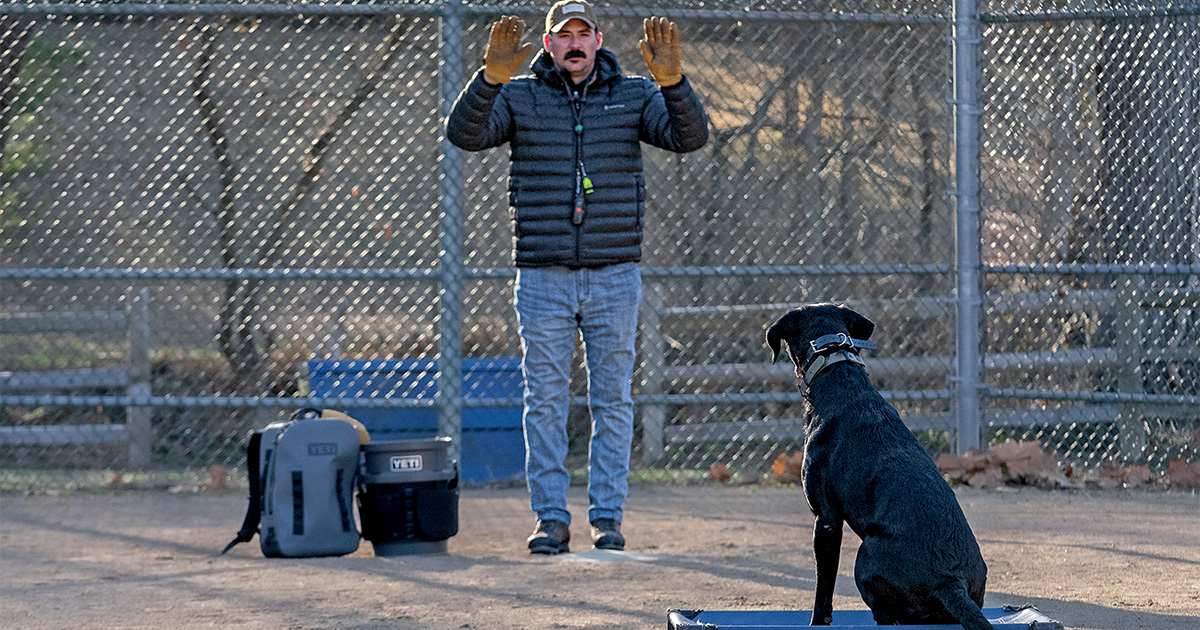
City parks and athletic fields offer open spaces where you can practice retriever skills. Try to go early in the morning or at other times when there aren’t many people around.
Like Spale, DePalma would usually train early in the morning. He looked for baseball and soccer fields, which offered plenty of space for longer-distance lessons. For water training, he visited a nearby state park with a large lake. He also traveled outside the city to neighboring rural areas and knocked on doors to get permission to train on agricultural lands. The kennel where he boarded his dogs during out-of-town work trips also had land and facilities for dog training.
Many trainers use an app, like the onX Hunt app, to find potential training grounds in their area. These apps show land ownership, water features, cover, parking, and other useful information.
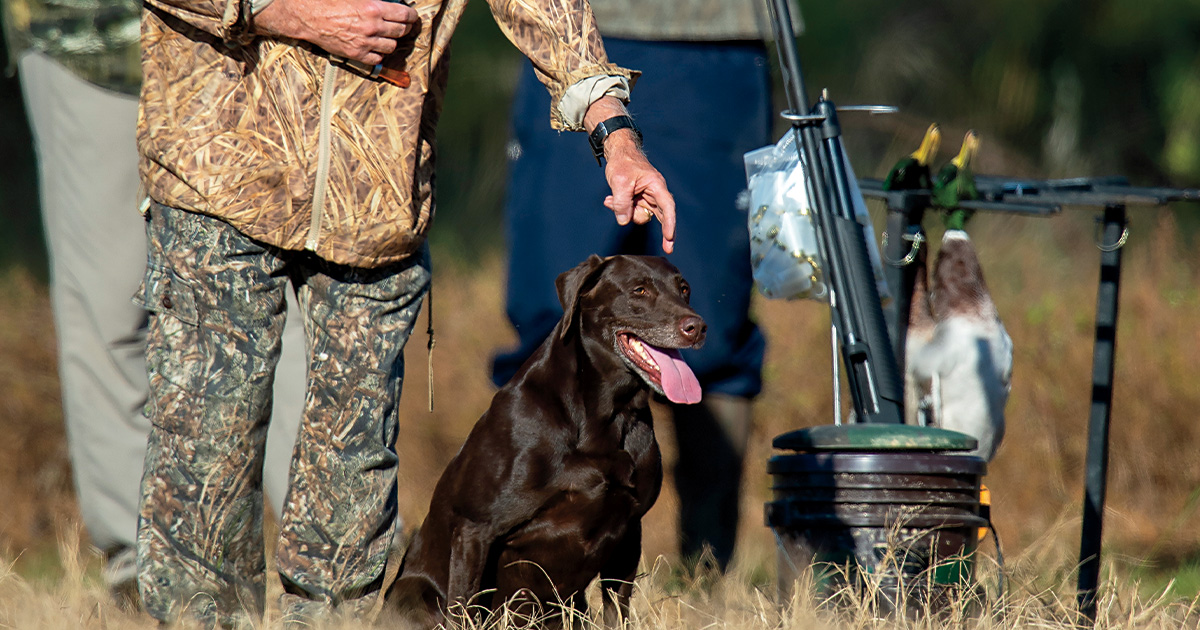
Retriever training clubs can provide you with many valuable resources, including places to work your dog.
Just because you’re an amateur trainer doesn’t mean you’re on your own. There are many ways to connect with other trainers in your area and find the resources you’ll need, including places to train. “Training a finished retriever requires training grounds,” Gunzer explains, “but there are lots of local retriever training clubs all over the country that can be valuable resources for the amateur trainer. Many of the clubs own training property. Others host training days at someone’s private property.”
Spale located a hunt club near Chicago that organized hunts using pen-raised birds. The club sold him birds to use for training and also let him use their grounds for general training from time to time. He also found a professional trainer in the area that he could go to for advice and direction.
DePalma connected with other amateur trainers at places like DU events, and he also worked under the tutelage of a professional. “There are some great trainers out there, and I was blessed to be able to work with one,” he says. “If you can find an accomplished handler who can teach you, then, as you gain experience, you can pass that knowledge on to others.”
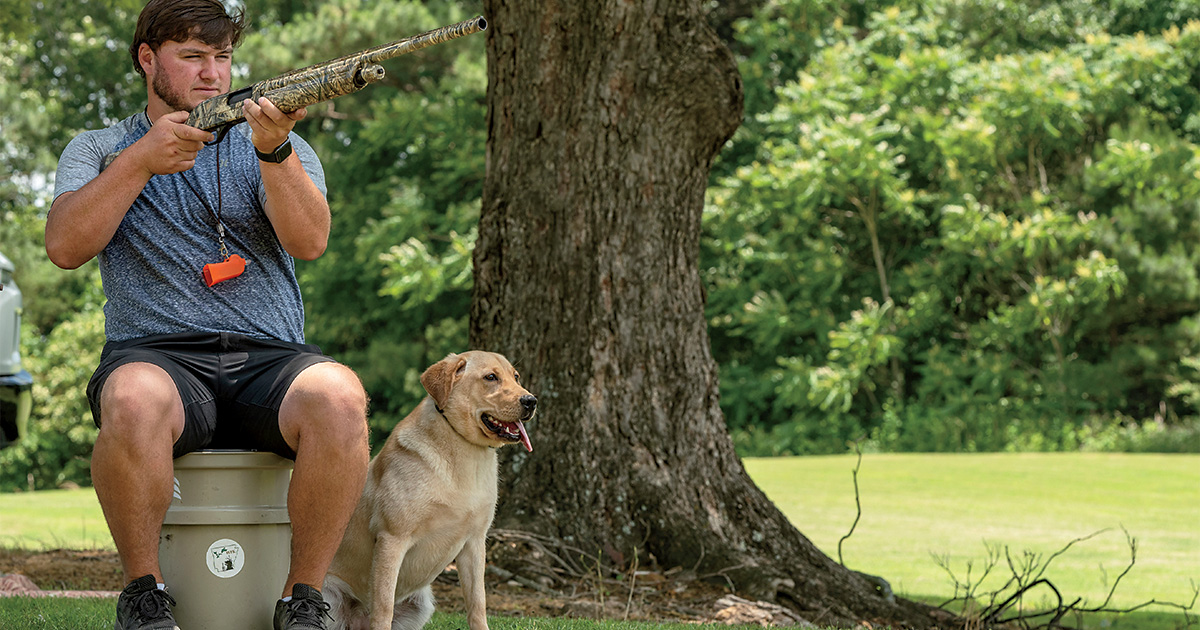
To introduce a young retriever to gunfire, you will likely have to travel to a hunting preserve or some other type of rural property.
Some parts of the training process are just going to be more difficult for the city dweller or suburbanite. A young retriever needs exposure to real birds—both alive and dead—but tossing dead birds or tethered live birds around a vacant lot in a place like downtown Chicago probably isn’t a realistic option. Retrievers also need careful, progressive exposure to gunfire, which can’t be done at your local suburban park.
For a pup’s first introduction to feathers, Gunzer recommends saving wings from birds you have harvested, storing them in the freezer, and then attaching them to a bumper. This will get the dog used to the scent and the feel of feathers in his mouth. When the time comes for experience with real birds, you might want to try DePalma’s method. He would acquire pigeons from the sporting dog kennel where he boarded his dogs, freeze the pigeons, and then, before a training session, wet them down in a bucket of water, which he says helps release the birds’ scent. He also admits to trapping pigeons on the roof of the building where he worked.
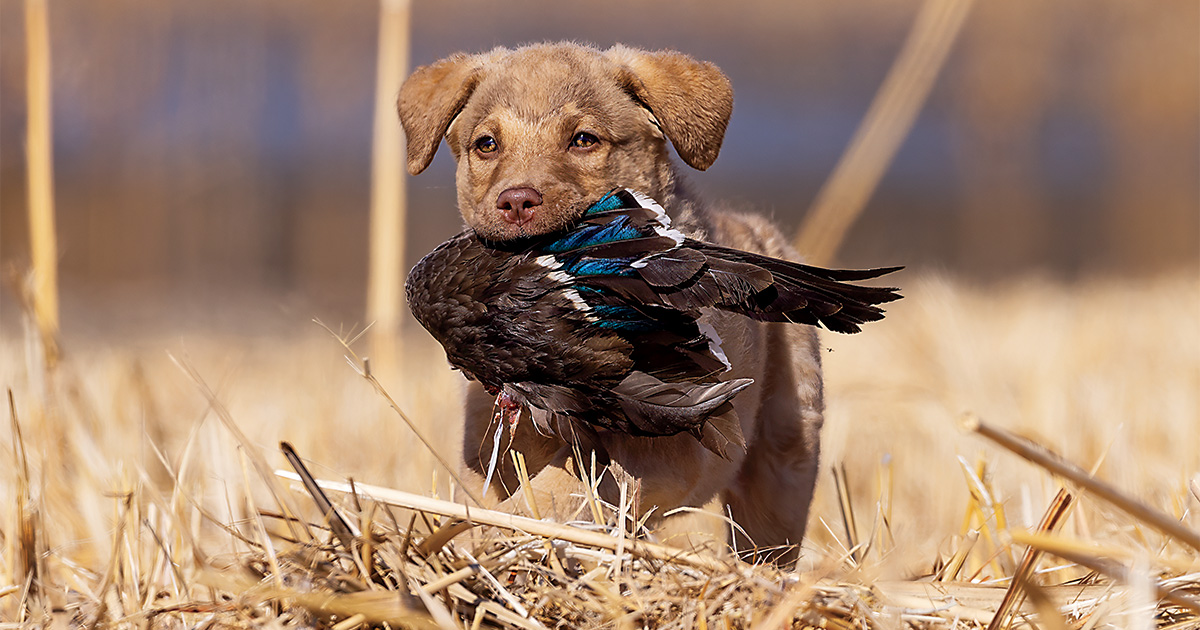
For a pup’s first exposure to real birds, practice some retrieves using a duck wing or duck feathers attached to a bumper.
Spale visited his local hunt club for training sessions where the objective included an introduction to gunfire, and he notes that all of the training in the city likely helped condition his young dog to loud noises. “The elevated train in Chicago is louder than a gun,” he recalls. DePalma would introduce gunfire on nearby farms where he had secured permission to train.
For his retriever’s first hunts, Spale hired a waterfowl outfitter in the area to take him hunting. He also participated in some of the controlled public land pheasant hunts organized by the Illinois Department of Natural Resources. Over the holidays, he headed back to his hometown, in Nebraska, for some “real” hunts with friends and family.
“Your process is longer because you’re going to have to be creative,” Spale recalls. “Looking back, I can’t believe I did all those things, but it’s what I had to do.”
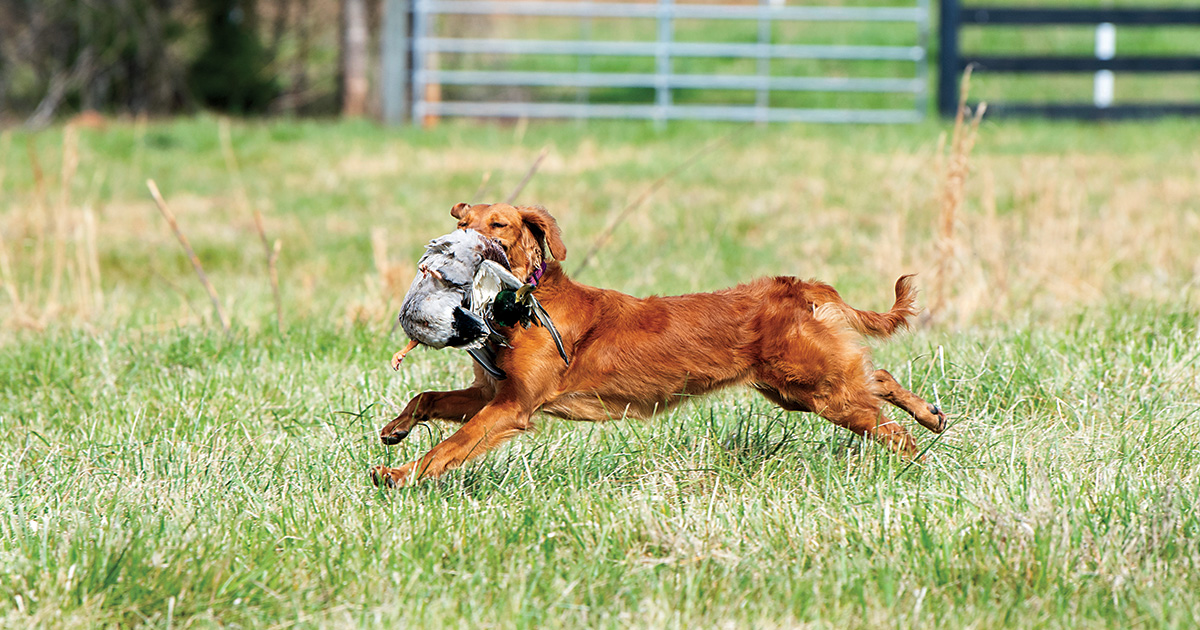
Getting permission to train on a nearby farm will provide you with a place to teach more advanced skills, such as long-distance retrieves, in a more realistic setting.
Try to train at times when there aren’t many people or other dogs around. Realize, though, that you will often draw attention to yourself. Many people won’t understand what you’re doing, and many others will be curious.
One early morning, when Spale was teaching whistle commands and hand signals at the vacant lot, a Chicago police officer kindly asked him to stop making so much racket.
DePalma used to take his dogs to a nearby state park near Seattle that has a large lake for water retrieves. One morning he noticed a news helicopter hovering over him. Later that morning he was deluged with calls from friends who said they had seen him on the morning news. Apparently one of the anchors said something like: “I wonder if he’s allowed to be out there doing that?”
No matter the challenges, persistence and consistency are the keys to producing a top-performing retriever. “Be intentional with your time,” Spale advises, “and be confident in what you’re doing.” A dog that can maintain focus and perform amid the traffic, sirens, people, and other dogs is bound to be a steady and reliable hunting companion.
“The time and toil—the labor of love that we put into our dogs is so worth it when we see our dogs do what they were born to do,” DePalma says. “That’s some cool stuff!”
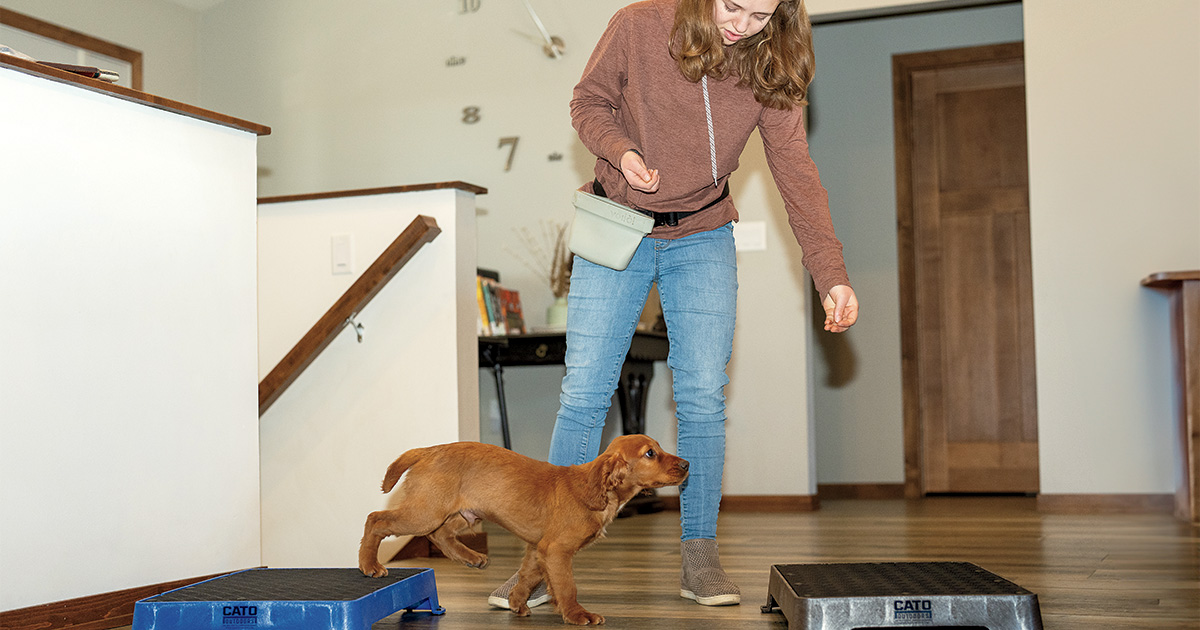
Much of a retriever’s training can be done in the home or backyard, especially the basic obedience and foundational behaviors that set the stage for success in more advanced training you’ll be doing later on.
Jordan Horak is a professional trainer and owner of Cato Outdoors, a Wisconsin-based company that manufactures “Cato Boards,” which are lightweight, raised platforms that can be used to teach and reinforce behaviors in a variety of dog training situations. Horak says that most of the problems with retrievers in hunting scenarios stem from the dog being out of control, such as when a retriever breaks, whines in the blind, or doesn’t bring a bird to hand. “If we can teach the dog to be under control, we can have a good hunt,” Horak says. “Most of the training in the home or backyard is focused on the dog being in control and being a good teammate.”
Here, Horak outlines three exercises that can be used to teach basic behaviors to a young puppy or an older dog that is just beginning his training. He recommends teaching in an area that’s free of distractions, such as a hallway with all of the doors closed. You’ll need some kind of raised platforms as well as some treats to use as rewards. Horak doesn’t use verbal commands at this early stage, and he stresses that the timing of the reward is critical—you want to give the reward as soon as the behavior occurs, so that the dog knows what he is being rewarded for.
For more training tips, visit catooutdoors.com.
Lesson One—Place
In this simple lesson, which can be done with a puppy as young as seven or eight weeks, you’ll teach your retriever to jump up on the platform. “For the first time, the pup is learning to perform a behavior to get a reward,” Horak says. “It’s a small step but a powerful building block for the rest of his training. We’ll be tapping into this for the life of the dog.”
STEP 1: Place the puppy on the floor next to the platform.
STEP 2: Use a treat to encourage him to jump onto the platform. When he does, reward him immediately with the treat.
STEP 3: Repeat this sequence five or six times, or until the puppy seems like he understands.
Lesson 2—Sit
This builds on the first lesson. The puppy is getting on the platform consistently but must learn a new behavior to get his reward.
STEP 1: Put the puppy on the floor next to the platform.
STEP 2: When the puppy jumps up on the platform, don’t reward him. Wait until he sits to reward him. You might have to take a step toward him or hold the treat over his head. When he sits, reward him immediately.
Lesson 3—Motion (basic hand signal)
For this lesson, which can be taught at eight to 10 weeks, you’ll need two platforms, and you’ll be teaching the pup to go from one platform to the other.
STEP 1: Position the platforms about four feet apart.
STEP 2: Encourage the pup to jump up on one of the platforms, but don’t reward him.
STEP 3: With the treat in your hand, where the pup can see it, point to the other platform. Reward the pup when he leaves the first platform and jumps on the second one.
STEP 4: Repeat this sequence until he is going from platform to platform consistently.
STEP 5: Begin rewarding with a treat only every third or fourth time. Then begin gradually increasing the distance between the platforms.
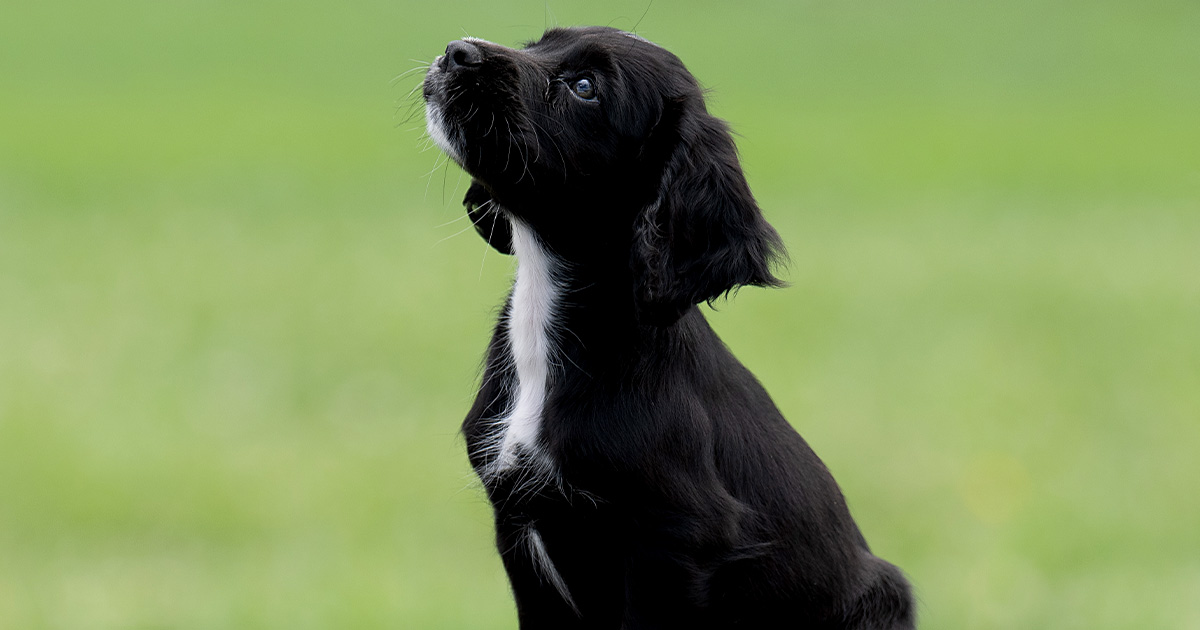
These organizations offer a wealth of resources for amateur and professional trainers and can help you connect with other trainers in your area.
Ducks Unlimited uses cookies to enhance your browsing experience, optimize site functionality, analyze traffic, and deliver personalized advertising through third parties. By continuing to use this site, you agree to our use of cookies. View Privacy Policy